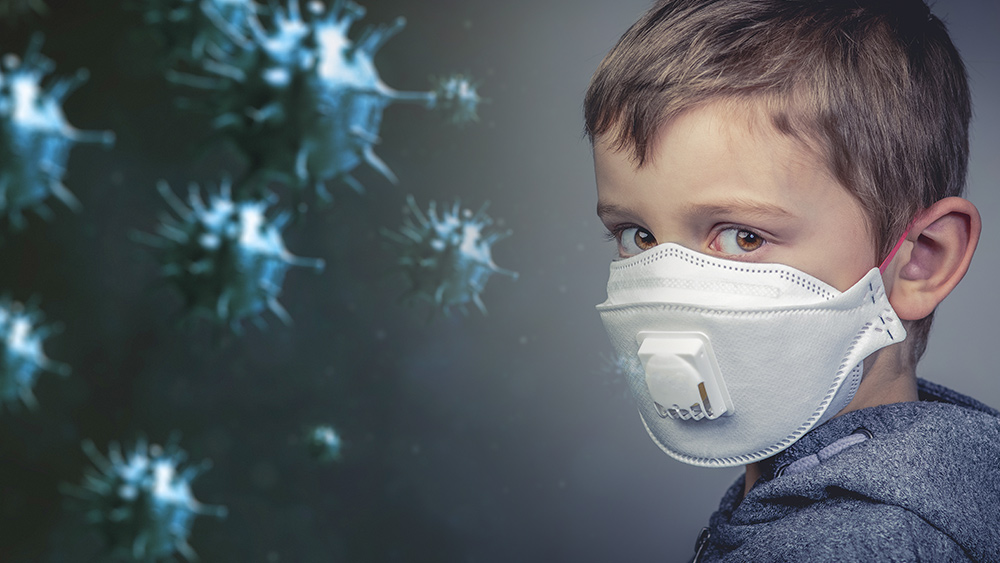Disease outbreaks are causing an alarming increase in mass die-offs of marine mammals, warns expert
08/16/2020 / By Divina Ramirez

Mass strandings, or “beachings,” of marine mammals are now on the rise, raising concerns that ocean health is deteriorating.
According to wildlife expert Claire Sanderson, disease outbreaks like the COVID-19 pandemic are to blame for the rapid increase in mass die-offs of marine mammals.
Scientists are perhaps more alert to the catastrophic impacts of infectious disease in both humans and animals in light of the ongoing pandemic, said Sanderson. Nonetheless, there are still limited studies on infectious diseases in species like marine mammals.
In protecting these animals, it is important to understand the factors influencing the spread of infectious diseases in the ocean, which, in turn, cause the die-offs, she added.
Sanderson is a research associate at the Virginia Polytechnic Institute and State University and the research coordinator of the nonprofit group Center for African Resources: Animal, Communities, and Land Use.
Pathogens in humans can also infect marine mammals
Disease-induced mass die-offs in marine mammals have been on the rise since 1996. In fact, from 1955 to 2018, infectious diseases accounted for a sixth of marine mammal deaths.
Because of how small these figures appear, scientists are still underestimating the actual numbers of outbreaks among marine mammal populations. It also doesn’t help that little research has been made on infectious diseases and ocean life.
More often than not, scientists depend on carcasses beaching to tell if something is amiss in the ocean, added Sanderson. But waiting for carcasses to beach won’t lead to much knowledge and further understanding of how infectious diseases are spreading among marine mammal populations in the first place.
To address these limitations, Sanderson studied decades of research on marine mammal health and disease outbreaks among marine mammals. One of her resources, a 2015 review published in the journal PLOS One, showed that the influenza virus is among the most common causes of disease outbreaks in harbor seals.
She also found that strains of the measles virus in humans caused disease-driven mass deaths in bottlenose dolphins. Other terrestrial pathogens found to cause outbreaks among marine mammal populations include bacteria, protozoa, parasites and fungi.
However, Sanderson noted that die-offs from non-viral diseases tended to be less severe than die-offs from viral diseases. For instance, a viral outbreak can cause about 7,000 marine mammal deaths based on records of past outbreaks, whereas a bacterial outbreak can cause just 350 deaths.
Nonetheless, smaller figures are not to be underestimated, said Sanderson. Deaths, no matter how few, can still be a blow to endangered marine mammal species, she added. Therefore, understanding disease dynamics in marine systems could help scientists better protect threatened species like these.
Unique features of marine mammals’ interactions influence the spread of disease
Scientists still do not know much about the interconnectedness between marine mammals. This complicates efforts to understand how disease spreads among marine mammal populations. However, Sanderson believes that the unique features of different species’ life histories could offer a glimpse into how viral diseases spread.
Social species like dolphins, for instance, might be better protected against outbreaks. Larger groups of dolphins can split into smaller groups, and these smaller groups can, later on, come back together to exchange information or to deter a predator.
This unique behavioral pattern of forming groups and splitting apart helps them avoid disease transmission, explained Sanderson. (Related: New study examines complexity of dolphin culture; researchers determine that brain size correlates with “human-like” behaviors and societies.)
It is also interesting to note that this pattern is almost the exact opposite of social distancing measures being enforced to curb the spread of COVID-19. Yet both have the same protective effect.
On the other hand, species like harbor seals and Caspian seals that aggregate during their breeding season might be more at risk of getting infected. Seals haul out in huge groups, explained Sanderson, and this makes it easier for the infectious pathogen to spread.
Marine mammals face greater risk of disease than terrestrial creatures
Unlike humans and terrestrial creatures, marine mammals are exposed to both land and ocean pathogens. In particular, pinnipeds like seals and sea lions that move between land and water face the highest risk of infection, explained Sanderson.
The canine morbillivirus that causes canine distemper first latched onto seals in 1988 and has been spreading ever since, said Alonso Aguirre, a wildlife disease expert and a professor of environmental science at George Mason University in Virginia.
Nonetheless, the lack of adequate research on infectious diseases in marine mammals makes it difficult to gauge the effect of disease outbreaks on the animals’ populations, said Sanderson. That being said, current studies suggest that the effects are sure to be far-reaching, she added.
Read more articles about oceans and marine life at OceanHealthNews.com.
Sources include:
Tagged Under: animal deaths, animals, Collapse, conservation, disease, disease outbreaks, dolphin deaths, Ecology, Endangered species, environ, environment, infectious diseases, marine life, marine mammals, mass death, ocean health, ocean life, Oceans, outbreak, seal deaths, whale deaths





















